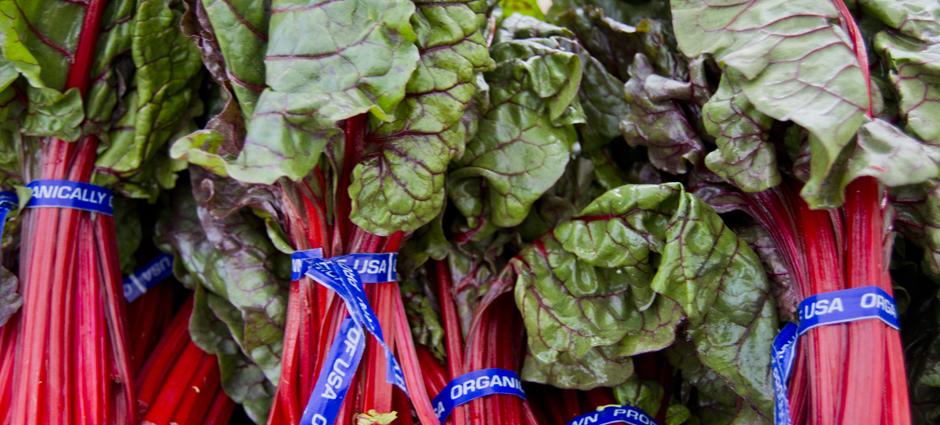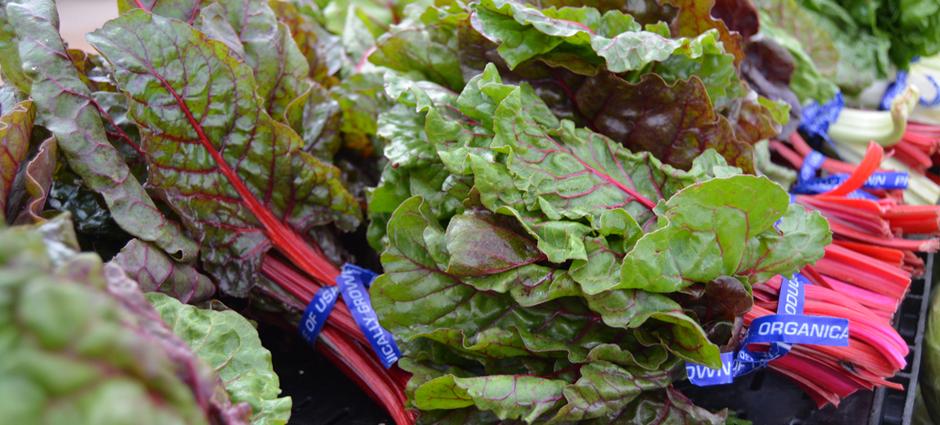Chard, commonly known as Swiss chard, isn’t Swiss at all – it’s actually native to the Mediterranean area but is now cultivated worldwide.
Swiss chard is in the same plant family as the beet and is used like spinach in cooking. However, chard has an appealing beet-like flavor and a heavier texture which requires longer cooking. Chard has shiny green ribbed leaves, with very colorful stems ranging from white to dark red. Large chard leaves have a slightly bitter taste while fresh, baby chard can be used raw in salads. Many cooks simply sauté the vegetable in olive oil and serve it as a side dish.
Rainbow "Bright Lights:" Colorful stems from pale yellow to bright red. Tender, milder flavor than other varieties.
White Ribbed and Lucullus: Both are large plants with white ribs, mild flavor, flat leaves.
Rhubarb: Its stem is only rhubarb-colored, not the flavor. Flattish red stems, mild leaves.
Barese: Looks almost like bok choy with short white stems bunched together and wide flat leaves. Mild flavor.


